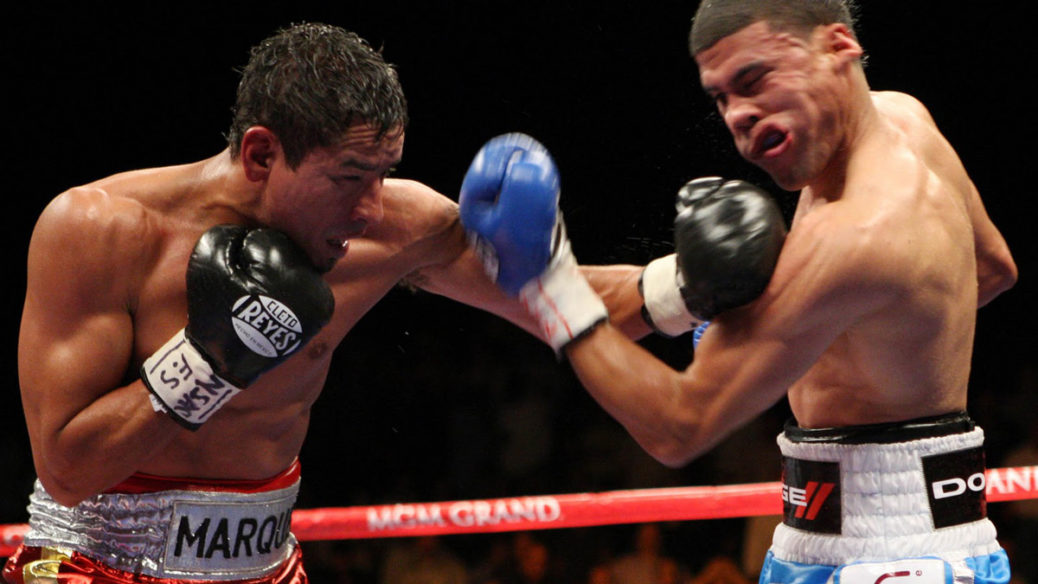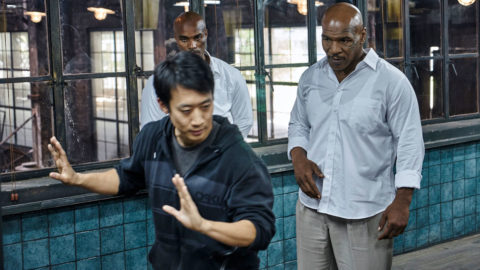Defensive Head Movement: A Systems Perspective
Nathan Wagar
Perhaps the largest difficulty that a new boxer faces is learning to close the distance against an opponent, and using the correct defensive strategy in the process. It is quite common to be taught defensive motions such as the slip combined with a counter for outside range, and to be taught various forms of stalking, bobbing, and weaving for the mid range.
The new boxer gets exceedingly comfortable working these techniques out on the pads, and enters into basic sparring with a high level of confidence, only to have it all fall apart against a live opponent. This is a very common experience, but it is probably more common than it should be, and indeed the best coaches have broken out of this linear teaching process in favor of something that is analogous to a CAS (complex adaptive systems) perspective. First, it is important that we take a closer look at what actually went wrong.
1. Distance is relational
This seems to be common sense, but it is remarkable how uncommon it seems to be in practice. When a boxer is using a long range defensive motion such as a slip, this is predicated on him being at long range in reference to his opponent, consistently, through the duration of the execution.
A moving target has to be adjusted for, and it is much more difficult to do this smoothly when already committed to a technique, particularly so for a beginner. It is one thing to maintain a correct distance during a technique when you are the one controlling it against a static reference, it is quite another when anticipating, forcing, and responding to a dynamic reference point.
2. It takes more training to adjust to an opponent while working your game
Beginning boxers tend to think about distance in terms of attacking, defending, and very basic countering. Boxing is seen as a way of imposing one’s game or defending against an opponent imposing his game, in a linear process.
Again, it is not by accident that this process tends to mirror the beginning boxer’s conception of boxing as learned in basic pad work. It takes skill and training to not just respond to an opponent, but to respond to an opponent who is in turn responding to him. This adds another dimension to the game, emerging from linear to dynamic in nature.
3. Some defenses are specific to a given distance
A slip as typically taught is for long range only. It is designed to evade and work counters off attacks coming on the straight line. Using a slip in mid range leaves one not only vulnerable to hook line punches, it may actually compound the force as the boxer slips into the punch. Similarly, a bobbing and weaving type motion is effective against hook lines as well, but is energy intensive and difficult to sustain over the course of a round.
Most fights are successive clashes that begin and end back at long range, with mid range being a transitive range of power shots and constant movement delivered from deep within the legs, and head movement can be exhausting if carried on for too long.1)This has been a common criticism leveled against Cus D’Amato’s peekaboo style boxing, as best exemplified by Mike Tyson’s amateur and early professional career. As Tyson closed the distance, his signature side to side slipping from the waist moved ever lower into almost a crouch in order to be effective against hook lines, before springing off to either side for hard power shots. This type of defense can be exhausting, and some coaches have criticized that it is dependent on fighter attributes such as a short, wide core. Regardless of whether this criticism has merit, it cannot be denied that one must be in very good shape for this strategy to be effective.
4. Beginners tend to get caught in transition
Since distance is dynamic, it can cause problems when combined with distance specific techniques. A beginner, or even a seasoned boxer facing someone with superior footwork, attempting a slip can very easily get caught with a hook line punch if he fails to adjust simultaneously to his opponent and finds himself in mid range.
This is also one of the most common issues as they get caught transitioning from long to mid range to deliver power shots. He may be doing everything in a textbook fashion just like on the pads, but the complex adaptive system of two boxers adapting to each other in a fight isn’t conducive to a linear approach.
5. In systems thinking, distance divisions can be thought of as system boundaries
A system is anything in reality that we decide to study as interrelated parts. In the case of boxing, we can look at long range and mid range as two different systems. The point of chaos will be the boundary between the two systems, known as the boundary or edge.
In technical systems terms, this is the point of symmetry breaking and bifurcation, as what would normally be two crisp, separate distances often overlap and then are reestablished several times within a short period, before finally bifurcating, or splitting, into a certain course of action such as long or mid range strategies. Because this point is so chaotic, it often can’t be reacted to quickly enough, as we can see with a beginning boxer that has inferior timing or footwork.
6. A robust lever is needed for system boundaries
A lever is something we can use at critical points in a system such as edges, that equalizes against this chaos by letting us control and influence the system with minimal effort while providing maximum effect. Robustness is a technical term referring to an easily adaptable solution that can “give” without breaking. When applied to boxing, we want a defensive motion that can adapt to either mid range or long range without “breaking.” A slip failing in mid range would be an example of “systemic failure” or “breaking.”
Putting it all together
We don’t necessarily need to use a technique that is a “jack of all trades,” because this has its own drawbacks, as we all know. Another potential approach is to slightly adjust both long and mid range techniques so that the transition is smoothed out. A slip can be performed from now on with a slight level change. A bob can be performed with a deeper level change.
Perhaps a slip is done away with altogether, and a beginning boxer can be taught a strategy of stalking that uses successive, ever deepening level change type defensive motions. Either of these strategies are only subtly different from the linear approach, but pay off with huge effects in live sparring.
That’s the difference between linear and nonlinear paradigms, however. What can seem superficially similar is actually a deep, deep divide in approach. A fruitful practice is to consider your own tactics and tools in the context of systems, and try to brainstorm and then practice methods that make your approach more robust.
References
| ↑1 | This has been a common criticism leveled against Cus D’Amato’s peekaboo style boxing, as best exemplified by Mike Tyson’s amateur and early professional career. As Tyson closed the distance, his signature side to side slipping from the waist moved ever lower into almost a crouch in order to be effective against hook lines, before springing off to either side for hard power shots. This type of defense can be exhausting, and some coaches have criticized that it is dependent on fighter attributes such as a short, wide core. Regardless of whether this criticism has merit, it cannot be denied that one must be in very good shape for this strategy to be effective. |
|---|










 Rob Brotzman
Rob Brotzman  Nathan Wagar
Nathan Wagar